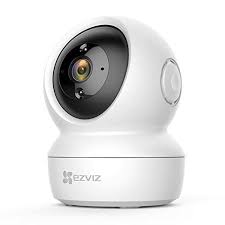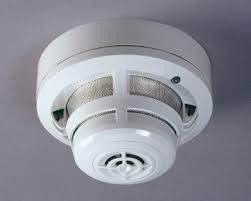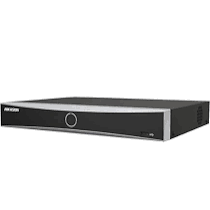Wireless Camera: The Future of Surveillance
In today’s fast-paced world, security and surveillance have become paramount concerns for both individuals and businesses. With technological advancements, the traditional wired camera systems are gradually being replaced by wireless cameras that offer greater flexibility, convenience, and enhanced functionality. Wireless cameras have revolutionized the way we perceive and implement surveillance systems.
One of the key advantages of wireless cameras is their easy installation process. Unlike traditional wired cameras that require extensive cabling and professional assistance, wireless cameras can be set up effortlessly. With no wires to worry about, these cameras can be placed virtually anywhere within range of a Wi-Fi network. This makes them ideal for both indoor and outdoor use, providing users with the freedom to monitor their property from various angles without limitations.
Another significant benefit of wireless cameras is their ability to transmit data wirelessly. These cameras connect to a Wi-Fi network, allowing users to access live video feeds remotely through their smartphones, tablets, or computers. This feature enables real-time monitoring from any location with an internet connection. Whether you are at work or on vacation, you can keep an eye on your home or business premises effortlessly.
Wireless cameras also offer advanced features such as motion detection and night vision capabilities. Motion detection technology triggers the camera to start recording whenever movement is detected in its field of view. This not only saves storage space but also alerts users to potential intrusions or suspicious activities. Additionally, many wireless cameras come equipped with infrared LEDs that enable clear video capture even in low-light conditions.
Furthermore, wireless camera systems often provide options for cloud storage or local storage via SD cards or Network Attached Storage (NAS) devices. This ensures that recorded footage is securely stored and easily accessible whenever needed.
The versatility of wireless cameras extends beyond security applications as well. They are widely used in baby monitoring systems, pet surveillance, and even for monitoring elderly family members who may require assistance.
However, it’s important to note that wireless cameras are dependent on a stable and secure Wi-Fi network. A strong and reliable internet connection is crucial for seamless video streaming and remote access. Therefore, it is advisable to invest in a robust Wi-Fi network or consider using wireless cameras with built-in signal boosters to ensure optimal performance.
In conclusion, wireless cameras have revolutionized the surveillance industry by providing convenience, flexibility, and advanced features. With easy installation, remote access capabilities, motion detection, night vision, and various storage options, wireless cameras offer an efficient and effective solution for both residential and commercial security needs. As technology continues to advance, we can expect even more innovative features to be integrated into wireless camera systems, making them an indispensable tool in our quest for safety and peace of mind.
Frequently Asked Questions About Wireless Cameras: Everything You Need to Know
- What is the best wireless camera?
- How do I set up a wireless camera?
- What are the advantages of using a wireless camera?
- What is the difference between wired and wireless cameras?
- How secure is a wireless camera connection?
- Can I access my wireless camera remotely?
What is the best wireless camera?
Choosing the best wireless camera depends on your specific needs and preferences. There are several top-rated wireless camera brands and models available in the market. Here are a few popular options:
- Arlo Pro 3: Known for its excellent video quality, the Arlo Pro 3 offers 2K HDR resolution, a wide field of view, and color night vision. It also has advanced features like motion detection, two-way audio, and a built-in siren.
- Nest Cam IQ Outdoor: This camera stands out for its intelligent features such as facial recognition, person alerts, and activity zones. It provides high-quality video streaming with a 4K sensor and HDR support.
- Ring Stick Up Cam Battery: Ring is well-known for its home security products, and the Stick Up Cam Battery is a versatile option. It is easy to install, weather-resistant, and offers customizable motion detection settings.
- Blink XT2: The Blink XT2 is an affordable option that doesn’t compromise on performance. It provides HD video quality, two-way audio communication, and long battery life.
- Reolink Argus 2: This wireless camera offers impressive features like starlight night vision, rechargeable batteries or solar power options, and flexible installation choices.
Remember to consider factors such as video quality, field of view, night vision capabilities, motion detection sensitivity, storage options (cloud or local), ease of use/installation, and compatibility with your existing smart home ecosystem when selecting the best wireless camera for your needs.
How do I set up a wireless camera?
Setting up a wireless camera is relatively straightforward. Here are the general steps to guide you through the process:
Choose the Right Location: Determine where you want to install the wireless camera. Consider factors such as the area you want to monitor, Wi-Fi signal strength, and power source availability.
Check Compatibility: Ensure that your wireless camera is compatible with your existing Wi-Fi network. Verify if it supports the same Wi-Fi standards (e.g., 802.11ac, 802.11n) and frequency bands (2.4GHz or 5GHz) as your router.
Power the Camera: Connect your wireless camera to a power source using the provided power adapter or batteries, depending on the camera model.
Connect to Your Wi-Fi Network: Most wireless cameras have a built-in setup wizard or mobile app for easy configuration. Follow the manufacturer’s instructions to connect your camera to your Wi-Fi network.
a. Typically, you’ll need to access the camera’s settings via a web browser or mobile app.
b. Look for options like “Wireless Setup” or “Network Settings” within the camera’s interface.
c. Select your Wi-Fi network from the list of available networks and enter your network password when prompted.
Position and Adjust Camera Angle: Mount or place your wireless camera in its desired location while ensuring that it has a clear view of the area you want to monitor.
Test Connectivity and Adjust Settings: Once installed, check if your wireless camera is connected successfully by accessing its live video feed through either a web browser or mobile app on your smartphone, tablet, or computer.
Fine-tune Camera Settings: Explore and adjust additional settings according to your preferences, such as motion detection sensitivity, recording schedules, resolution settings, and notification alerts.
Secure Your Camera: Change default login credentials (username/password) for added security. Regularly update your camera’s firmware to ensure it has the latest security patches.
Remember, specific setup instructions may vary depending on the brand and model of your wireless camera. Always refer to the manufacturer’s user manual or online resources for detailed instructions tailored to your device.
What are the advantages of using a wireless camera?
Using a wireless camera offers several advantages over traditional wired camera systems. Here are some key benefits:
- Easy Installation: Wireless cameras are simple to install compared to wired cameras. There is no need for extensive cabling, drilling holes, or hiring professional installers. With wireless cameras, you can save time and effort during the setup process.
- Flexibility and Mobility: Wireless cameras provide flexibility in terms of camera placement. Without the limitations of cables, you can position the cameras anywhere within range of a Wi-Fi network. This allows for greater coverage and the ability to monitor different areas of your property from various angles.
- Remote Access: One of the significant advantages of wireless cameras is remote access. By connecting to a Wi-Fi network, you can access live video feeds from your smartphone, tablet, or computer from anywhere with an internet connection. This enables real-time monitoring and provides peace of mind even when you’re away from home or the office.
- Motion Detection: Many wireless camera models include motion detection technology. This feature triggers the camera to start recording whenever motion is detected within its field of view. It not only saves storage space but also alerts you to potential intrusions or suspicious activities.
- Night Vision Capability: Wireless cameras often come equipped with infrared LEDs that enable clear video capture even in low-light conditions. This ensures that you have visibility and surveillance capabilities around the clock, regardless of lighting conditions.
- Expandability: Wireless camera systems are typically expandable, allowing you to add more cameras as needed without significant hassle or additional wiring requirements. This scalability makes it easy to customize your surveillance setup according to your evolving needs.
- Versatility: Wireless cameras are not limited to security applications alone; they have versatile uses as well. They can be used for baby monitoring systems, pet surveillance, elderly care monitoring, and more.
- Cloud Storage Options: Many wireless camera systems offer cloud storage options for recorded footage. This allows you to securely store and access your video recordings remotely, without the risk of losing data due to theft or damage to physical storage devices.
- Minimal Disruption: Since wireless cameras do not require extensive wiring, they cause minimal disruption to your property’s aesthetics. This makes them a suitable choice for both residential and commercial settings.
- Future-Proof Technology: Wireless camera technology continues to evolve rapidly. As new features and advancements are introduced, wireless cameras can be easily upgraded or integrated with other smart home or security systems.
Overall, using a wireless camera provides convenience, flexibility, remote access, advanced features like motion detection and night vision, expandability options, and versatile applications. These advantages make wireless cameras an increasingly popular choice for individuals and businesses seeking reliable surveillance solutions.
What is the difference between wired and wireless cameras?
Wired and wireless cameras are two different types of surveillance cameras that differ in terms of their connectivity and installation methods. Here are the key differences between the two:
- Connectivity: The most obvious difference is the way they connect to the surveillance system. Wired cameras require physical connections through cables, typically Ethernet or coaxial cables, to transmit data and power. On the other hand, wireless cameras use Wi-Fi or other wireless technologies to transmit data and may require a separate power source or rely on batteries.
- Installation: Wired cameras involve a more complex installation process due to the need for running cables from the camera to the recording device or network. This requires drilling holes, concealing wires, and potentially professional assistance. In contrast, wireless cameras offer a simpler installation process as they don’t require extensive cabling. They can be mounted or placed anywhere within range of a Wi-Fi network.
- Flexibility: Wireless cameras provide greater flexibility in terms of camera placement compared to wired cameras. With no cables limiting their positioning, wireless cameras can be easily moved or repositioned without any additional wiring work. This makes them suitable for temporary setups or areas where wired installations are impractical.
- Reliability: Wired cameras tend to have a more reliable connection since they are directly connected through physical cables. They are less susceptible to interference from other devices or environmental factors that can affect wireless signals. Wireless cameras may experience signal degradation or interference if there are obstacles like walls or other electronic devices between the camera and the receiver.
- Range: Wired cameras have no range limitations as long as there is a cable connection available between the camera and recording device or network switch/router. In contrast, wireless cameras have a limited range determined by their Wi-Fi signal strength and any potential obstructions in their path (e.g., walls). However, with advancements in technology, some wireless camera systems now offer extended ranges with signal boosters or mesh network setups.
- Security: Wired cameras are generally considered more secure since their data transmission occurs through physical cables, making it harder for potential hackers to intercept the footage. Wireless cameras, on the other hand, transmit data over the airwaves and may be susceptible to hacking if not properly secured with encryption and strong passwords.
Ultimately, the choice between wired and wireless cameras depends on individual needs and specific circumstances. Wired cameras are often preferred for long-term installations or areas where reliability is crucial, while wireless cameras offer convenience, flexibility, and ease of installation.
How secure is a wireless camera connection?
Wireless camera connections can be secure if certain precautions are taken. Here are some factors to consider regarding the security of a wireless camera connection:
- Encryption: Look for wireless cameras that use encryption protocols, such as WPA2 (Wi-Fi Protected Access 2) or higher, to secure the data transmitted between the camera and the connected devices. Encryption helps prevent unauthorized access to the video feed and ensures that the data remains confidential.
- Unique Passwords: Change the default password provided by the manufacturer and set a strong, unique password for your wireless camera system. Avoid using easily guessable passwords and consider using a combination of letters, numbers, and special characters.
- Network Security: Ensure that your home or business Wi-Fi network is secured with a strong password and encryption protocol. Regularly update your Wi-Fi router’s firmware to patch any security vulnerabilities.
- Two-Factor Authentication (2FA): If available, enable two-factor authentication for accessing your wireless camera system. This adds an extra layer of security by requiring an additional verification step, such as entering a code sent to your mobile device, before granting access.
- Secure Network Configuration: Disable any unnecessary network services on your wireless camera system to minimize potential attack vectors. For example, if remote access is not required, disable it to reduce the risk of unauthorized access.
- Regular Firmware Updates: Keep your wireless cameras’ firmware up-to-date by regularly checking for updates from the manufacturer’s website or through their dedicated software applications. Firmware updates often include security patches that address vulnerabilities discovered over time.
- Physical Security: Place your wireless cameras in secure locations where they are not easily accessible or tampered with by unauthorized individuals.
- Network Monitoring: Regularly monitor your network traffic and keep an eye out for any suspicious activity that may indicate a breach or unauthorized access attempts.
While these measures can enhance the security of your wireless camera connection, it’s important to note that no system is completely immune to potential security risks. It’s always recommended to stay informed about the latest security practices and consult with professionals if you have specific concerns about the security of your wireless camera system.
Can I access my wireless camera remotely?
Yes, you can access your wireless camera remotely. Wireless cameras are designed to connect to a Wi-Fi network, allowing you to access the live video feed from anywhere with an internet connection. To access your wireless camera remotely, you typically need to follow these steps:
- Set up your wireless camera: Install the camera according to the manufacturer’s instructions and connect it to your Wi-Fi network. This usually involves using a mobile app or web interface provided by the camera manufacturer.
- Create an account: Most wireless cameras require you to create an account with the camera manufacturer or use a dedicated app for remote access. This account allows you to securely log in and view the camera’s live feed.
- Install the mobile app or software: Download and install the mobile app provided by the camera manufacturer on your smartphone or tablet. Alternatively, some cameras allow remote access through a web browser on your computer.
- Connect to your camera: Open the mobile app or web interface and log in using your account credentials. Once logged in, you should be able to see a list of connected cameras associated with your account.
- Accessing live video feed: Select the desired camera from the list, and you should be able to view its live video feed in real-time on your device’s screen.
- Additional features: Depending on the capabilities of your wireless camera and its associated app or software, you may have access to additional features such as motion detection alerts, two-way audio communication, recorded footage playback, and customization options.
It is important to ensure that both your wireless camera and remote device have a stable internet connection for seamless video streaming and remote access. Additionally, it is recommended to set strong passwords for both your Wi-Fi network and camera accounts to enhance security and protect against unauthorized access.
Always refer to the specific instructions provided by the manufacturer of your wireless camera for detailed guidance on accessing it remotely as different models may have slightly different setup processes.





Hello very nice web site!! Guy .. Beautiful .. Amazing ..
I will bookmark your web site and take the feeds also?
I’m satisfied to search out numerous helpful info right here within the put up,
we need work out more strategies in this regard, thanks for sharing.
. . . . .
Thank you for your kind words! We’re glad you enjoyed our website. If you found the information helpful, be sure to check back for more insights on wireless cameras and surveillance technology. Your feedback motivates us to continue sharing valuable content.